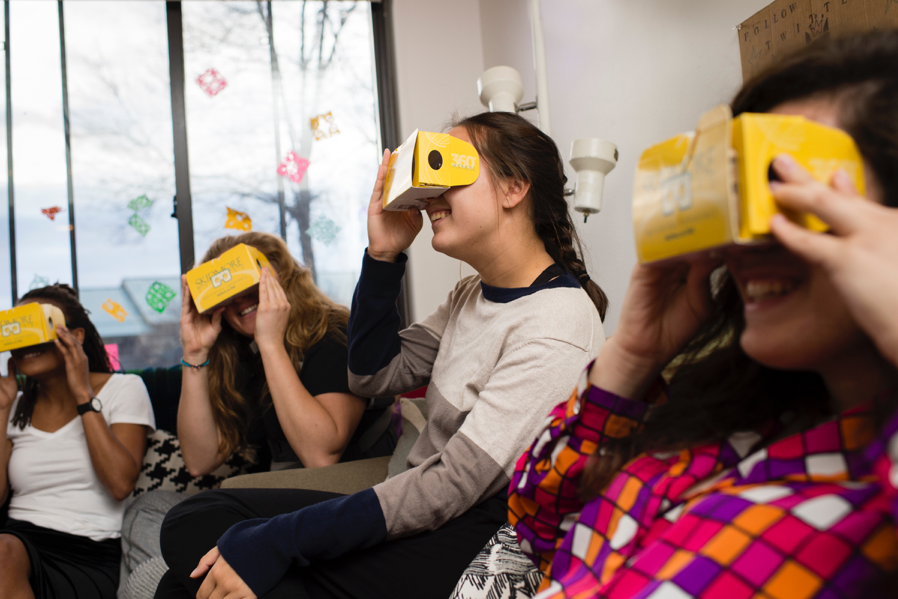AN EXCERPT FROM OUR GEN Z WHITE PAPER
PART 2 – RETHINK YOUR MESSAGING AND MEDIA
In Part 1 of this two-part series, we gave you some challenging facts about the size and attitudes of the Gen Z audience, and some significant ways they differ from the Millennials you’re so well acquainted with. It’s likely that this audience will seem very different – and possibly difficult – to market to, but here’s an absolute fact: Gen Z is where your next students will come from.
Fortunately, if you look closely at their social values, you’ll see some highly encouraging signs. These are exactly the types of values that quality schools hope to instill. With that, here are a number of key findings we’ve gathered, followed by specific recommendations of how to put these insights to maximum effect.
GEN Z – ON THE BRIGHT SIDE
Here are their most important social issues:

They’re entrepreneurial: Skills they value:

Recommendations:
Are your scholarships and other financial aid offerings competitive? If they are, make it a large priority to communicate them clearly.
How do you rank for diversity? If you have a message in this area, say it loud and clear.
Make it clear what opportunities students have to volunteer on and off campus, and possibly even receive credit for it. Also describe the social causes your school, your faculty, your staff, and your alumni contribute to.
If you have current students who can tell stories about the businesses they have already started or are working on, give them a video platform to tell their stories. Also, do you have an incubator on campus? That could also send a powerful message.
What about workplace skills? Long after technology has made many of today’s current talents and skills obsolete, communication and problem-solving are capabilities that will always be vital. To help students become better communicators, consider adding more classes in public speaking, presentation arts, and expository writing. If your curriculum is already strong in these areas, feature it.
Demonstrate how you can help them become problem-solvers by using a cross-disciplinary approach. If you offer classes like this, excellent. Even better, if you integrate the practice of these skills throughout the curriculum, be sure to market your pragmatic, success-driven approach, and stress what a valuable dimension it can add to your liberal arts classes.
In other words, show that what they want aligns perfectly with what you can offer.
CREATIVE EXECUTION:
MAKE IT REAL AND MAKE IT ENTERTAINING
Recently, Skidmore College became the first college in the country to use a 360° virtual student experience to drive yield. Other institutions have offered virtual campus tours, but Skidmore went well beyond a real estate tour that looked at empty facilities, and instead, delivered an immersive experience of student life. It put the viewers squarely in the middle of the scene, able to look around and choose their own focal point, and choose the conversation they want to be part of. It delivered an up-close and personal feeling of being there, of already belonging. Prospective students felt like they were hanging out with real students in the student center, sitting at the table in the cafeteria, behind the scenes at Beatlemore Skidmania, and on the hockey rink.
But this tour didn’t succeed solely because of its medium. The authentic feel of the experience was key, as was the link of the content to Skidmore’s brand positioning, which we developed together almost ten years ago: “Creative Thought Matters.” Then, in developing the VR story line, we made sure to show how the importance of creative thought at Skidmore goes well beyond the classroom. It also infuses the everyday lives of students.
See Skidmore 360° virtual student experience here.

KEY TAKEAWAYS
To recap, there are three areas where you can make positive changes to your communications strategy: Your brand strategy, your creative strategy, and your creative execution.
Your Brand Strategy: Figure out what you need to say and to whom, so the message is authentic to your institution and valuable to your audience. This can and should include aligning the key attributes of your school with the values of your Gen Z prospects.
Your Creative Strategy: Determine how to say it so that audiences on both sides of the generational divide want to listen. Use a highly focused creative brief to guide your efforts.
Creative Execution: Determine where and when to say it so the message arrives at the right time, in the right format (digital, print, broadcast) in the relevant channel (social, search, email, direct mail, in person) and on the right platform (Facebook, Snapchat, College Confidential, college fairs, etc.).
1. The State Of Gen Z 2017: Meet the Throwback Generation, by Denise Villa, Ph.D. and Jason Dorsey, The Center for Generational Kinetics, LLC., April 2017, copyright 2017.
